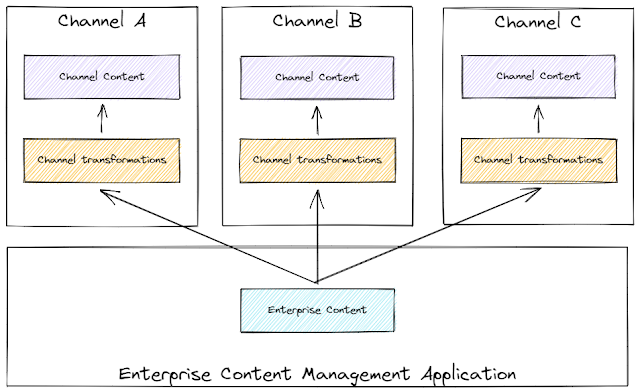That's a one million-dollar question, isn't it? Or should it be euro or bitcoin? I don't know anymore to be honest. I think the most crucial part is that at least with your group (read your circle of people), you should have a definition of it.
Last week, I noticed this during a meeting with colleagues. We were discussing content, someone was thinking about text files, and another thought of images and videos, etc. Even within an expert group, we had different opinions about what content should be. So we discussed it and came up with a definition of what content means for us.
What is the definition of content?!
As with many things, the most important part is to start with the context. In what context are we discussing content? For my blogs, when I talk about content, I mean content in the context of a web publishing platform. My definition of content is: Content should be agnostic and must created for with omnichannel publication in mind. It can be anything from text, images, videos, PDFs, Word or Powerpoint documents. The thing that they all have in common? They are all digital and will be ideally published from one application. To better indicate it, let us from now on calling it Enterprise Content.
The characteristics of Enterprise Content are:
- Multi-channel, it should add business value for more than one channel
- It can be created with multiple departments
- Flattened content, without any styling, like markdown
- Multi-language
- Versioning, archiving and audit trails
- Digital Management rights
- Metadata and classification by standards like OWL, Dublin Core and Schema.org
Next to that, we've also defined the content that goes into the channels. We named that content -> Channel Content. It's tailored specifically for the needs of the channel. So what does Channel Content look like?
The characteristics of Channel Content are:
- Content like images and videos are converted to fit the specific needs of a channel. For example, an image is converted into different ratios.
- Specific metadata fields are required, while others are ignored if not needed
- Content is only absorbed by the channel if there's a need for it
- If the Channel Content is created from Enterprise Content, a relation should be added. So that one can trace back the source of the Content.
When we create an overview of how Enterprise Content and Channel Content might look, we get the following image. As you can see Channel Content will derive from Enterprise Content.
This concludes the What is Content? question. As you might have noticed, don't make assumptions. It's the mother of all f*** ups ;). To quote Steve Jobs: "Stay Hungry Stay Foolish"!
Until next time!

